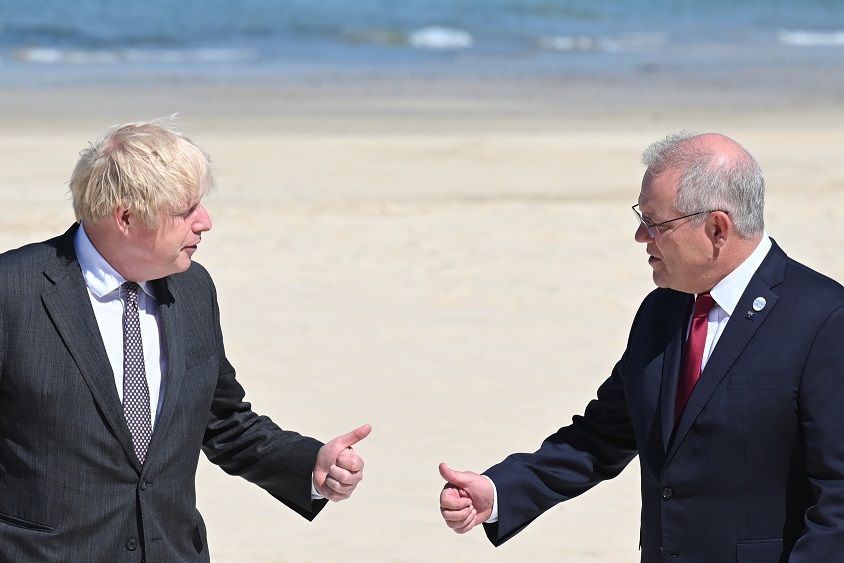On Tuesday, both Liberal New South Wales and South Australia Governments delivered their budget statements for the upcoming year. NSW Treasurer the Hon Dominic Perrottet MP and SA Treasurer the Hon Rob Lucas MLC had the difficult task of managing covid recovery, continued economic growth and competing social priorities.
The team at Nexus has analysed and compared both state budgets to determine their impact on infrastructure, health, and manufacturing.
INFRASTRUCTURE
Capital works are always prominent measures in state budgets, serving as a conduit to economic growth and helping to tie the nation together by rail and road. This year, both States have ramped up infrastructure spending to kickstart their economies. While NSW has the financial muscle to spend an estimated $27.1 billion, SA’s more modest $4.4 billion (both over four years) still manages to punch above its weight.
NSW is set to see $3.0 billion spent towards the Jobs and Infrastructure Acceleration Fund. While this includes spending on health and education infrastructure, it also distributes $118.2 million in new highway expansions and $20 million to bootstrap work on the Coffs Harbour Jetty Foreshore precinct.
Transport in NSW has also received a commitment for consistent funding over the next four years. Most prominently, this will consist of:
- $588.1 million for NSW bus services to buy new buses, reduce carbon emissions and expand existing routes.
- $12.0 billion for the Sydney Metro West project.
- $3.1 billion towards the More Trains, More Services program to modernise the rail network; and
- Over $5.0 billion in highway projects, including the M6 Stage 1, the Great Western Highway upgrade, the Northern Road upgrade, and the M12 Motorway.
The NSW Government will also invest in what has been dubbed “Sydney’s third” CBD – The new Bradfield site in the city’s west and home to the new airport precinct. $870.0 million will be spent, enabling workers to prepare the site and begin foundational work on the new Bradfield City Centre, intended to provide a new economic hub for businesses and the “jobs of the future”.
SA infrastructure spending has focused on its rail and road network in Tuesday budget, with support from the Federal Government. Spending measures include:
- $36.0 million in the next two years to refurbish the Old Murray Bridge.
- $100.0 million in additional funding over the next three years to complete the Gawler Line Electrification project; and
- $180.0 million over the next four years to duplicate the Augusta Highway – increasing traffic capacity through the Adelaide to Lochiel route.
SA’s new and continued infrastructure spending has been largely overshadowed by massive increases in existing projects’ estimated cost. An extra $1.0 billion has been allocated to the North-South Corridor. The SA Government has abandoned its controversial Hove level crossing project, as the commonwealth was not willing to assist in the project’s $280.0 million blowout.
Both Governments have marketed infrastructure spending as instrumental to pandemic recovery. The Hon Gladys Berejiklian MP declared her government’s infrastructure spending would “provide a path to employment for thousands of people in NSW, while assisting our economic recovery”. The Hon Rob Lucas MLC notes that “record infrastructure spending” in the 2021 budget is important enough to delay the State’s return to surplus.
HEALTH
Health continues its prominence as both NSW and SA look towards a post-COVID future. The ABC’s Daniel Keane noted COVID-19 relief, Health and Hospitals as ‘winners’ in the SA budget. At the same time, the NSW Government continued support for the pandemic response with a $1.1 billion investment in the health sector.
NSW has broken down its health spending into a COVID-19 fund, Health Capital Works, Mental, Regional, and Digital Health spending.
$1.1 billion COVID-19 pandemic relief includes:
- $340.0 million in PPE (personal protective equipment) for medical workers.
- $261.3 million for the State’s contribution to COVID-19 vaccination.
- $200.0 million to continue to support temporary clinics, COVID-19 testing, and contact tracing; and
- $145.4 million budgeted to ensure quarantined travellers receive emergency medical assistance when required.
The NSW government highlights in the budget:
- $835.0 million for the John Hunter Health and Innovation Precinct.
- $740.0 million for the Liverpool Health and Academic Precinct; and
- $673.3 million for the Tweed Hospital and the Integrated Ambulatory Services Redevelopment
Mental health will receive $109.5 million over four years. This will go towards 25 Mental Health Crisis Teams across NSW to support adolescents suffering from mental illnesses. This funding is in addition to a more modest $36.4 million over four years for 57 mental health Response and Recovery Specialists across regional and rural NSW.
Finally, several significant projects are forecasted to begin within digital and regional health spending in the coming years. $900.0 million will be invested in regional health centres in Moree, Gunnedah, Muswellbrook, and Wentworth hospitals. In addition, $141.0 million has been allocated to commence a Single Digital Patient Record to increase interoperability between health institutions.
SA has put mental health and covid support as the highest health priorities for the State and Government within the budget.
Over the next two years, SA plans to spend $149.2 million, which “Extends South Australia’s successful measures to protect the community from COVID-19…” (SA 2021-2022 Budget Papers). $86.1 million is directed towards the vaccination roll-out. In comparison, $98.9 million over the next five years is expected to be used for border patrols, hotel quarantine security and other COVID related administration.
A $163.5 million mental health package will deliver a multifaceted approach to mental health over the next four years. Highlights include:
- $5.0 million in 2021-22 to build new housing for people living with mental health disabilities.
- $7.3 million to continue COVID mental health programs; and
- $20.4 million over three years to build a new 16-bed crisis stabilisation facility in the northern suburbs of Adelaide.
A new Women’s and Children’s hospital has been announced, with $1.1 billion allocated in the current forward estimate. Other health capital works include $45.1 million additional funding to the SA ambulance service over the next four years and $18.8 million to expand the Meningococcal B Immunisation Program.
The states will likely continue to priorities health spending to increase the public’s confidence in pandemic management. As a result, the health sector is expected to enjoy record spending into the foreseeable future.
MANUFACTURING
Manufacturing has not played a prominent part in budget reporting. Nevertheless, both States have committed to support this vital sector.
SA has announced the Small Business Capability Program, spending $2.6 million over the next four years to “to develop digital and cyber security capabilities, as well as other traditional key business capabilities to enter the national trade market” (SA 2021-2022 Budget Papers). Further, the establishment of Trade and Investment Representation in Mainland Europe – to the tune of $1.8 million over four years – may increase European opportunities for SA manufacturers.
SA considers 2021 as a pivot point towards the future industry. This year, the State will invest $2.0 million to establish the Waite Plant-Based Food Incubator Laboratory. In addition, $5.4 million over four years is dedicated to Wine producers to assist the industry find new international markets for their goods. The environmental industry will also receive a boost, including $7.9 million for the Northern Adelaide Waste Management Authority to construct a paper and cardboard beneficiation plant.
In contrast, NSW has focussed more on small business support in addition to increases in technical skill training throughout the State.
In total, $2.0 billion will be invested in TAFE capital works, including the construction of additional TAFE campuses. As the NSW Department of Education announced on Tuesday, “There will also be $11.4 million to continue or complete construction of Connected Learning Centres in Bateman’s Bay, Cobar, Jindabyne, Hay, Tomaree, Nambucca Heads and Byron Bay.”
Small business support – including for small manufacturers and producers – primarily concerns an attempt to streamline state government regulation and oversight. This involves:
- $20.0 million for the Business Concierge service, which provides small business with an additional communication channel with Service NSW, the State’s customer service agency.
- $9.8 million to facilitate the Business Connect program, an initiative to provide advisory services to NSW small businesses; and
- $4.3 million in additional funding for the NSW Small Business Commission to deliver mediation services to commercial entities.
Only time will tell whether SA’s direct approach or NSW’s indirect strategy will better support domestic manufacturers as they recover in a volatile global economy.
The key questions left facing the Nexus team following the above analysis are:
- Will this budget help or hinder the SA Government as they look to their 2022 March Election? and
- Will the upcoming Tasmanian and ACT budgets also include substantial spending in health, infrastructure and manufacturing. Both of which are to be handed down in August?
Latest posts by Nexus APAC (see all)
- United Kingdom General Election 2024: An Overview - April 15, 2024
- Australian Voters Go to the Polls - February 26, 2024
- Secretaries of Federal Departments – An Overview - February 1, 2024



